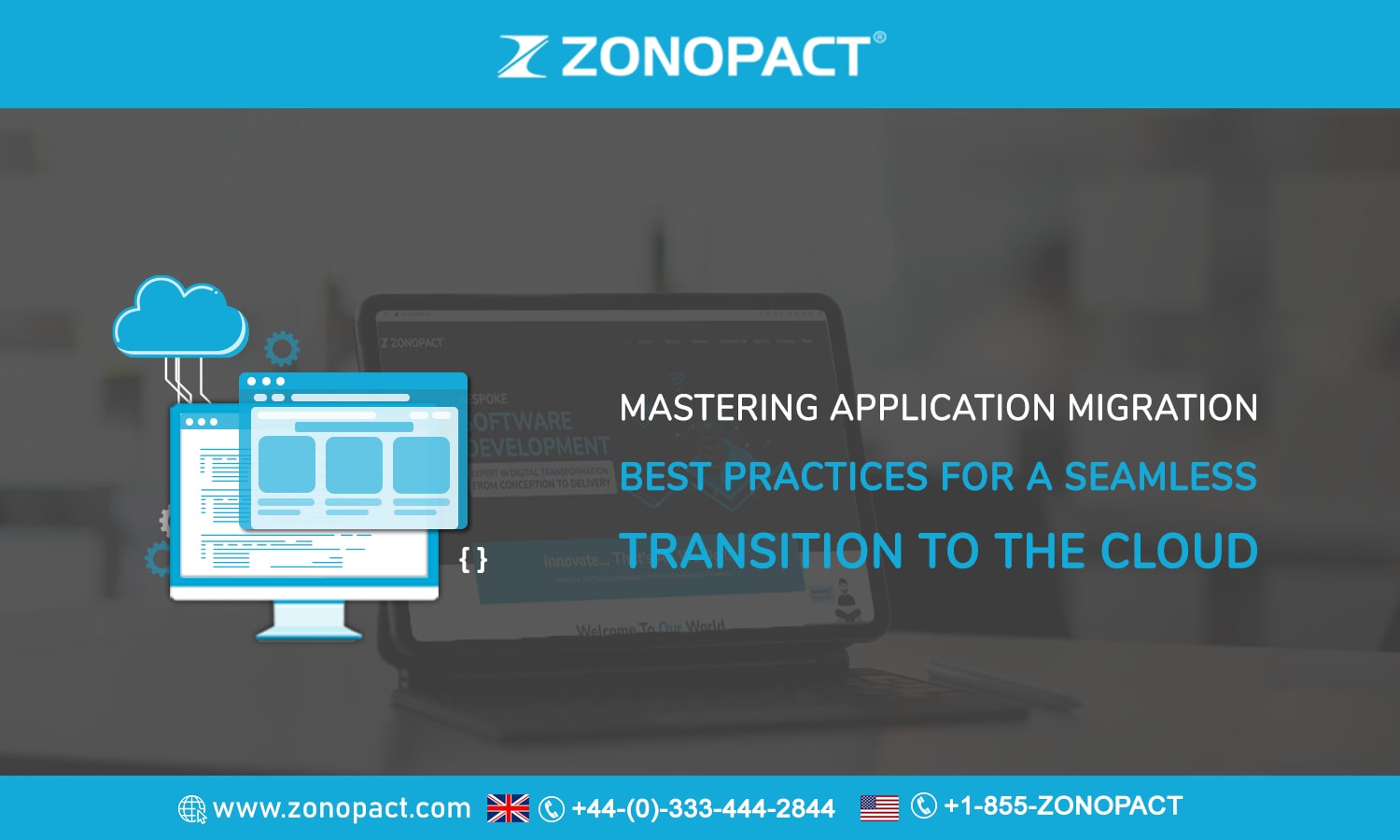
- Emily
- December 25, 2023
- 0 Comments
Introduction to Application Migration
In today’s digital age, businesses are increasingly leveraging the power of the cloud to enhance their operations. Application migration, the process of moving applications and workloads from on-premises infrastructure to the cloud, plays a crucial role in this transformation. However, it is essential to approach this migration strategically to ensure a seamless transition. This article will explore the best practices and crucial considerations for mastering application migration.
Understanding the Benefits of Cloud Migration
Before diving into the intricacies of application migration, it’s important to understand why businesses are opting for cloud adoption in the first place. Cloud migration offers numerous benefits, including scalability, cost savings, improved security, and enhanced flexibility. By transitioning applications to the cloud, businesses can diminish their reliance on physical infrastructure, lower maintenance expenses, and gain enhanced agility. Moreover, the cloud offers access to cutting-edge technologies like artificial intelligence and machine learning, empowering businesses to innovate and maintain a competitive edge.
Key Considerations for a Successful Application Migration
A successful application migration requires careful planning and consideration. Assessing your current infrastructure, applications, and business needs are essential to determine the most suitable cloud migration strategy. Depending on your requirements, you may choose between different migration models, such as the lift-and-shift approach, where applications are moved as-is, or a more comprehensive re-architecting approach, where applications are optimised for the cloud environment. Additionally, considering factors like data security, compliance, and vendor lock-in will help you make informed decisions during migration.
Best Practices for Planning Your Application Migration
Proper planning is key to a successful application migration. Start by thoroughly inventorying your applications and identifying dependencies and interconnections. Categorise applications based on their criticality and complexity to prioritise migration efforts. It is also essential to set clear goals and define success metrics to track the effectiveness of the migration process. Collaborate with stakeholders, including IT teams, business units, and cloud service providers, to ensure alignment and gather valuable insights. Additionally, create a detailed migration plan to streamline the process and minimise disruptions, including timelines, resource allocation, and contingency measures.
Preparing Your Applications for Migration
Preparing your applications for migration is a critical step towards achieving a seamless transition. Begin by assessing application compatibility with the target cloud environment. Identify any dependencies on specific hardware or software that may require modifications. Conduct thorough testing to ensure that applications function properly in the cloud. Additionally, optimise your applications for the cloud by leveraging cloud-native services and architectures. This may involve refactoring certain components, adopting microservices, or reconfiguring databases. By optimising your applications, you can fully harness the benefits of the cloud and enhance performance.
Strategies for Minimising Downtime During Migration
Downtime during application migration can have a significant impact on business operations. To minimise disruptions, and employ strategies that ensure a smooth transition. Consider using a phased migration approach, where applications are migrated gradually, allowing for continuous operation. Implementing load balancing and failover mechanisms can help distribute traffic and ensure high availability. Communication with stakeholders, including end-users, is crucial to manage expectations and provide necessary support during the migration. You can minimise downtime and maintain business continuity by carefully planning and executing your migration strategy.
Post-Migration Considerations and Ongoing Optimisation
The journey continues once your applications have been successfully migrated to the cloud. Post-migration considerations and ongoing optimisation are vital for maximising the benefits of cloud adoption. Continuously monitor and analyse application performance, identifying any bottlenecks or areas for improvement. Leverage cloud-native monitoring and management tools to gain real-time insights into your applications’ health and performance. Regularly update your applications and infrastructure to take advantage of new features and security patches. Lastly, foster a culture of continuous improvement, encouraging feedback and collaboration among teams to drive innovation and optimise your cloud environment.
Conclusion: Achieving a Seamless Transition to the Cloud
Mastering application migration is crucial for businesses looking to leverage the full potential of the cloud. By grasping the advantages of migrating to the cloud, evaluating key factors, and adhering to best practices, you can achieve a seamless transition to cloud computing. Proper planning, preparation, and ongoing optimisation are essential for a successful migration. Partnering with experts like Zonopact can provide valuable guidance and support throughout migration. With their experience and expertise, you can confidently embrace cloud adoption, maximising its benefits for your business. Contact Zonopact today to embark on this journey and seamlessly transition your applications to the cloud!
FAQ's
Migrating applications to the cloud offers several benefits, including cost savings, scalability, flexibility, improved performance, and enhanced security. It is imperative for businesses as it enables them to harness the complete capabilities of cloud technology to foster innovation and stay competitive in today’s digital environment.
Some key factors to consider when planning application migration to the cloud include assessing application compatibility, evaluating security requirements, estimating costs, considering data residency and compliance regulations, and defining migration goals and timelines.
Best practices for successful application migration to the cloud include conducting a thorough assessment of existing applications, prioritising applications for migration, creating a detailed migration plan, testing applications in the cloud environment, implementing robust security measures, and providing training for staff.
Collaborating with specialists such as Zonopact is essential because they can offer valuable guidance and assistance throughout the migration process. With their experience and expertise, they can help businesses navigate complex challenges, optimise performance, and ensure a successful transition to the cloud.
Getting started with Zonopact for application migration to the cloud is simple. Contact us today to arrange a consultation with our experienced professionals. We’ll work closely with you to understand your business goals, assess your current environment, and develop a customised migration plan tailored to your needs. Let’s embark on this journey together and seamlessly transition your applications to the cloud!